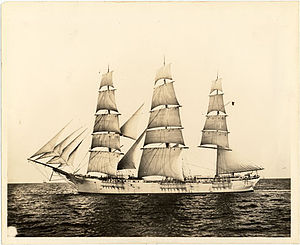
A clipper was a type of mid-19th-century merchant sailing vessel, designed for speed. Clippers were generally narrow for their length, small by later 19th century standards, could carry limited bulk freight, and had a large total sail area. "Clipper" does not refer to a specific sailplan; clippers may be schooners, brigs, brigantines, etc., as well as full-rigged ships. Clippers were mostly constructed in British and American shipyards, although France, Brazil, the Netherlands and other nations also produced some. Clippers sailed all over the world, primarily on the trade routes between the United Kingdom and China, in transatlantic trade, and on the New York-to-San Francisco route around Cape Horn during the California Gold Rush. Dutch clippers were built beginning in the 1850s for the tea trade and passenger service to Java.
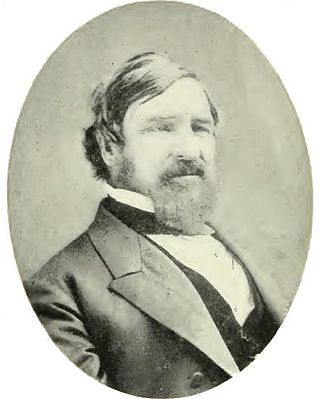
Nathaniel Brown Palmer was an American seal hunter, explorer, sailing captain, and ship designer. He gave his name to Palmer Land, Antarctica, which he explored in 1820 on his sloop Hero. He was born in Stonington, Connecticut, and was a descendant of Walter Palmer, one of the town's founders.
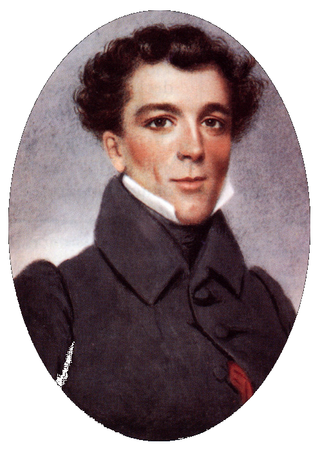
Captain Robert Bennet Forbes, was an American sea captain, China merchant and ship owner. He was active in ship construction, maritime safety, the opium trade, and charitable activities, including food aid to Ireland, which became known as America's first major disaster relief effort.
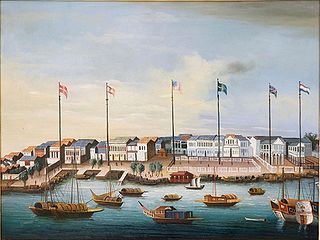
The Old China Trade refers to the early commerce between the Qing Empire and the United States under the Canton System, spanning from shortly after the end of the American Revolutionary War in 1783 to the Treaty of Wanghia in 1844. The Old China Trade represented the beginning of relations between the United States and East Asia, including eventually U.S.–China relations. The maritime fur trade was a major aspect of the Old China Trade, as was illegal trafficking in opium. The trade era overlapped the First Opium War, which resulted from an attempt by China to enforce its prohibition on opium smuggling by Western traders and blockade-runners between 1839–1842.

Abiel Abbot Low was an American entrepreneur, businessman, trader and philanthropist who gained most of his fortune from the China trade, importing teas, porcelains, and silk, and building and operating a fleet of reputable clipper ships.

USS R. B. Forbes was a steamer acquired by the Union Navy during the American Civil War. Originally built in either 1845 or 1846, the vessel saw service as a tugboat and briefly a lightship at Boston, Massachusetts. Built by Otis Tufts and named after Robert Bennet Forbes, she was the first iron mercantile vessel built in New England.

The N.B. Palmer was a clipper ship owned by A.A. Low & Brother which was active in the China trade.
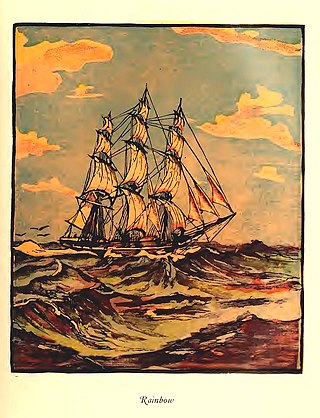
Rainbow, launched in New York in 1845 to sail in the China trade for the firm Howland & Aspinwall, was a clipper, a type of sailing vessel designed to sacrifice cargo capacity for speed.

Surprise was a California clipper built in East Boston in 1850. It initially rounded Cape Horn to California, but the vessel's owners, A. A. Low & Brother, soon found that the vessel performed well in Far Eastern waters. From that point onward the vessel spent much of her working life in the China trade, although the vessel also made three trips from the East Coast of the United States to California.
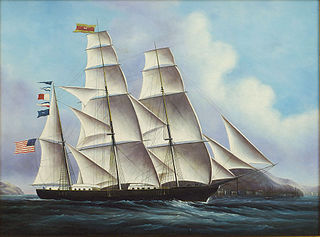
Houqua was an early clipper ship with an innovative hull design, built for A.A. Low & Brother in 1844. She sailed in the China trade.

The Memnon was the first clipper ship to arrive in San Francisco after the Gold Rush, and the only clipper to arrive in San Francisco before 1850. Built in 1848, she made record passages to San Francisco and to China, and sailed in the first clipper race around Cape Horn.
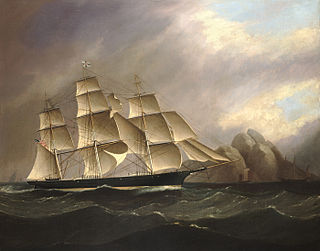
Ocean Telegraph was a clipper ship that was built in Massachusetts in 1854 and was last known of in Gibraltar in 1923. She was in US ownership until 1863, when UK interests bought her and renamed her Light Brigade.

Golden Fleece was an 1855 medium clipper in the California trade, built by Paul Curtis. She was known for arriving with cargoes in good condition, for making passages in consistently good time, and for catching fire with a load of ice.
The schooner Anglona was the first American opium clipper. She sailed in the Chinese coastal trade in the 1840s, and had a famous race with the schooner Ariel around Lintin Island.
Eliza Stewart was a sailing ship built in 1833. She traded with Australia, China, and India and was last listed in 1843, having wrecked in early 1844.

The New Zealand Company was a 19th-century English company that played a key role in the colonisation of New Zealand. The company was formed to carry out the principles of systematic colonisation devised by Edward Gibbon Wakefield, who envisaged the creation of a new-model English society in the southern hemisphere. Under Wakefield's model, the colony would attract capitalists who would then have a ready supply of labour—migrant labourers who could not initially afford to be property owners, but who would have the expectation of one day buying land with their savings.
Sarah was launched at Rotherhithe in 1819. She made three trips to China and went to Australia four times. In 1829 she transported convicts to New South Wales and in 1837 she delivered convicts to Van Diemen's Land. She was condemned c.1843.
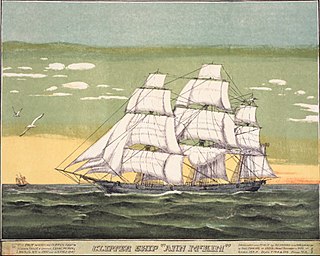
Ann McKim was one of the first true clipper ships. The opening of new Treaty ports in the East in the early 1840s eased an access of the US merchants to China, which demanded the ships that could move cargo faster than then-traditional slow-moving, high-capacity merchant ships. The Ann McKim was one of the ships that had answered the demand in the early years and sailed between New York and China in 1840–1842, until newer and faster cargo-carriers, such as the nearly 600-ton clipper Houqua, the 598-ton China packet Helena, Witch of theWave, and Rainbow, with the last two built expressly to outperform the Ann McKim started dominating the shipping world of the US-China trade and the Ann McKim was shifted back to the South American trade routes.
Cumbrian was launched at Shields in 1811. Initially, during the last years of the Napoleonic Wars, Cumbrian was a transport. After the end of the war she became a West Indiaman. In 1817 she made one voyage to Bengal, sailing under a licence from the British East India Company (EIC). In 1819 she became a whaler, sailing from Kingston upon Hull to the northern whale fishery. From 1835 on she left whaling and started trading more widely, to North America, Bombay, and Africa. She was driven ashore in August 1844, refloated, and subsequently condemned.
